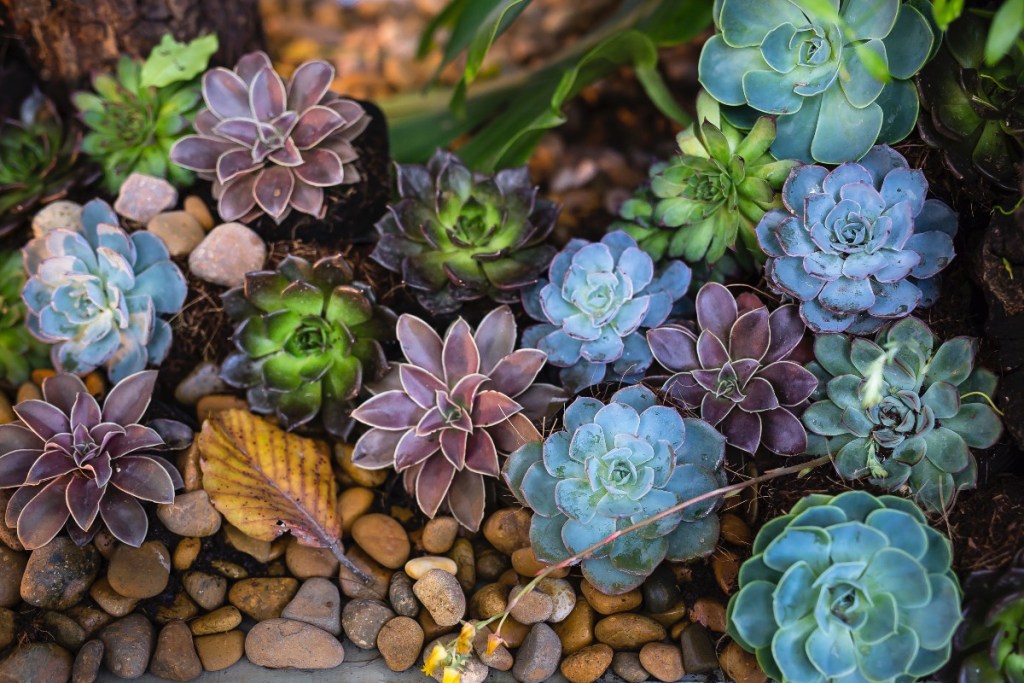“How does your garden grow?” reads one line from the nursery rhyme “Mary, Mary Quite Contrary.” If your answer is “not at all,” you might want to reconsider, particularly if you’re having trouble relaxing.
It turns out, flexing your green thumb can lower stress, depression, and anxiety. Gardening is also linked to increased happiness and self-esteem. (And as a bonus? It can also count as exercise.)
If you’ve never gardened before or tried and didn’t do so well, you may be a bit apprehensive about giving it a try. However, you don’t need to be a landscaping legend to reap the benefits of gardening. There are a few simple projects that can relax your mind all while growing something truly beautiful. Consider adding one of these four easy gardening projects to your summer bucket list.
Herb garden
If adding a little fresh spice to your meals sounds nice, consider growing an herb garden. You’ll literally be able to reap what you sow when you go out to pick some herbs from your garden right before cooking dinner. Many herbs, like basil and bay, can even be grown indoors, making this project accessible to city dwellers, as well.
First, think about what herbs you want to grow and research what conditions help them thrive. For example, basil and dill do best in full sunshine, while mint prefers shade. You’ll also want to know what plants grow best together. Mint actually grows best when solo, but basil’s companion herbs include cilantro, parsley, and chives. You can find ready-to-plant herbs at a local gardening store or big-box retailer like Lowe’s.
Choose well-draining soil and add well-composted topsoil instead of fertilizer. Maintenance for herb gardens includes watering in the morning when the soil is dry (the dryness should reach about an inch below the surface) and trimming, clipping, and picking every so often to prevent overgrowth.
Tomatoes
Tomatoes are a heart-healthy food with plenty of Vitamin K, a vitamin essential to bone health. They also hydrate your skin, making them the perfect snack for hot summer days. They’re also pretty easy to grow on your own, even if you don’t have a green thumb. The variety you choose just depends on your palate: Cherry tomatoes are easy snacks and salad fixings, but beefsteak is best for sauces.
When planting tomatoes, be sure to find a spot with plenty of sunlight — tomatoes need six to eight hours per day of direct sunlight to thrive. Also, don’t forget to water regularly. You’ll know it’s time to water if the soil is dry one to two inches below the surface. Mother Nature typically determines when the tomatoes ripen, but pinching off the main stems’ tips in June and July can speed up the process.
Tomato plants can grow pretty tall, so keep your pots somewhere with loads of space. Consider getting stakes and cages to help support the plants as they grow, and this will also prevent the tomatoes from falling onto the ground.
Sunflowers
If you prefer the aesthetics of gardening over the tastes, consider planting some sunflowers this summer. These giant yellow flowers typically reach full bloom in mid-summer and early fall, depending on where you live, but you can plant them as early as springtime once the soil temperature is consistently at least 60 degrees.
When starting off your sunflower garden, plant the seeds about an inch below the soil, no deeper. Keep the seeds about six inches apart and, once the seedlings are six inches tall, thin the weaker ones. You want the strongest ones to remain and be about a foot apart, giving them enough space to thrive.
When small, water the flowers regularly around the roots until they are established, then limit watering to about once per week. If your sunflowers grow tall, you may want to support them with stakes to prevent them from breaking or falling over.

Succulents
If you’re in the market for the most low-maintenance plant possible, stick to succulents. They need very little water to thrive and can withstand extreme heat.
Succulents pair well with blue mist spirea, lavender, and Santa Barbara daisies if you’re looking to spruce up an existing garden. You can also leave them in pots as-is for cute decor. Regardless of where you put them, be sure to invest in succulent-specific soil.
Once they’re in the ground, there’s not too much else to do but enjoy them. It’s hard to kill succulents, but the biggest mistake people make is over-watering. You really only need to water them during droughts or heat waves if you notice their leaves are shriveling. Even then, don’t douse them. A little spray will do.
Next time you’re looking for an effective method of stress relief, consider breaking out the spade. Planting and tending to the garden is a great way to clear your head and get a little closer to nature. You don’t need to be a master arborist to care for a plant or two, so head over to your local garden shop and get started, even if you have a not-so-green thumb.
BlissMark provides information regarding health, wellness, and beauty. The information within this article is not intended to be medical advice. Before starting any diet or exercise routine, consult your physician. If you don’t have a primary care physician, the United States Health & Human Services department has a free online tool that can help you locate a clinic in your area. We are not medical professionals, have not verified or vetted any programs, and in no way intend our content to be anything more than informative and inspiring.




